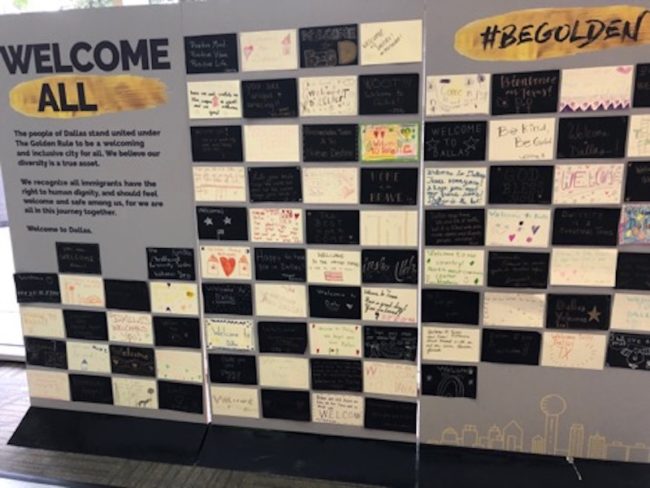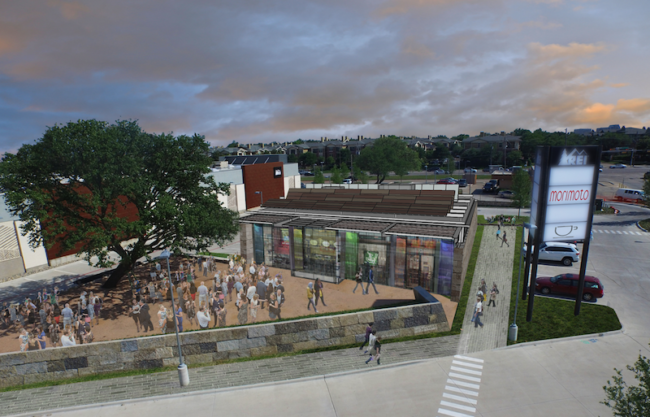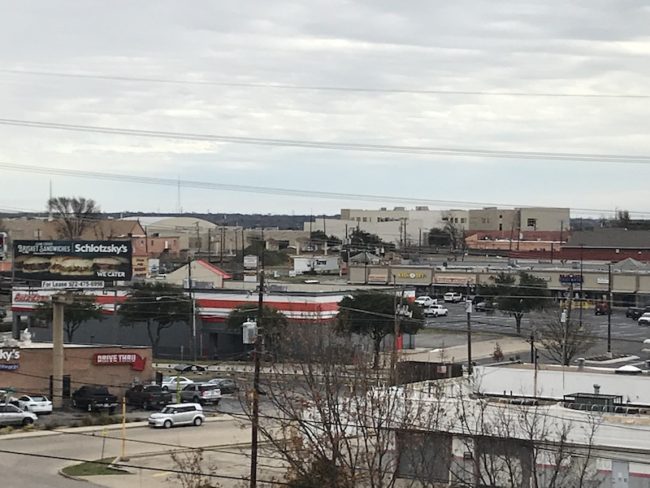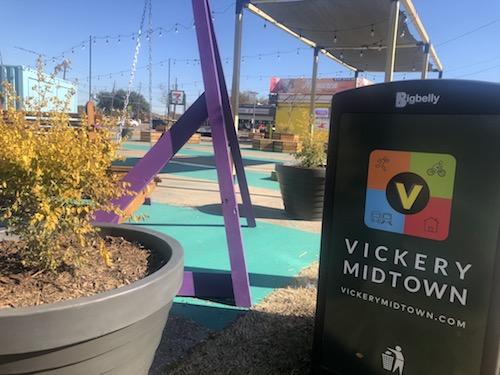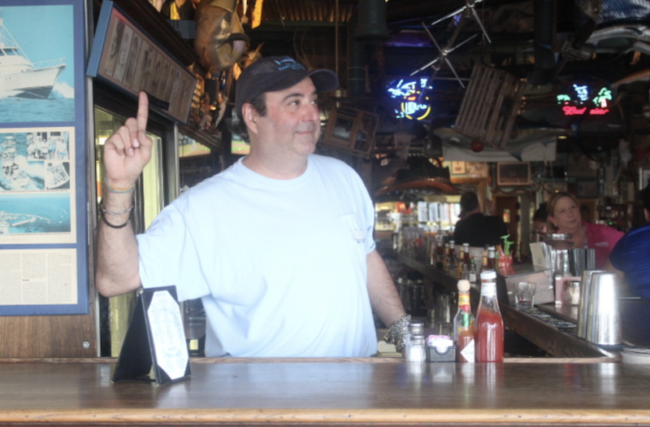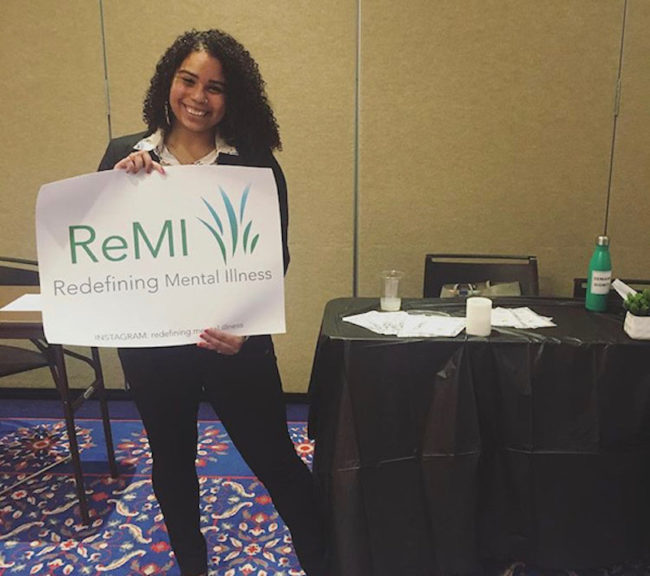
One year ago, Ralph Isenberg opened YaYa, the world’s only Tex Mex frozen yogurt store in the Bishop Arts District.
In recent years, Bishop Arts has gone from a residential neighborhood to shops inside buildings that create a small-town feel. As a longtime member of the community, Ralph Isenberg has watched the community change.
“I was around these parts 30 years ago, where there wasn’t a Bishop Arts District and several of the buildings in the district I actually managed for a bank after they were foreclosed,” he says.
He retired from real estate last year and decided to make frozen yogurt his hobby. He opened YaYa Best Tex Mex Yogurt the day after Thanksgiving in 2018.
“I didn’t go to college, I went straight into the hotel/restaurant business,” Isenberg says. He worked in that field for 15 years before becoming a real estate developer. Now he has returned to the restaurant business by opening the yogurt shop, located in the middle of one of the store lined blocks of the Bishop Arts District.
YaYa serves Tex Mex frozen yogurt, with flavors such as Aztec Coffee Blend and Jalapeno and his shop is the only one in the world that sells this, he says. The store is an open space that highlights the different flavors and spices used in the yogurts. His favorite part of running his shop is the people he encounters each day.
“I found it amazingly simple, that by just serving some good yogurt, being friendly, and having the right environment, you make people happy,” he says.
By Colleen Elliott
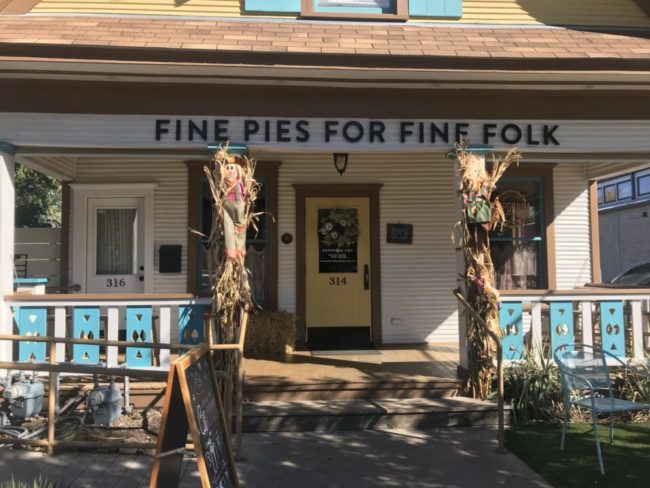
Kimberly Dawn has worked in Bishop Arts for eight years and enjoys everything the community has to offer.
On a rainy Tuesday morning, the house that is Emporium Pies in the Bishop Arts District, where Kimberly Dawn works, is unusually empty. The lunch rush hasn’t hit yet, and when it does the line will grow quite quickly.
Eight years ago, Dawn began working at Oddfellows, a traditional American diner in Bishop Arts. It reminded her of California where she lived before moving back to Dallas. “I forced my way into getting a job there just by showing up, every single day, bothering them…I wanted to work there,” she says.
When she left Oddfellows, she helped bring Emporiums Pies to Bishop Arts. One of her favorite parts about working in Bishop Arts is the community aspect to it. “I love how the business owners all really support each other and it’s kinda like a family; bickering back and forth, but also a lot of support,” Dawn says.
As the Thanksgiving holiday nears, the pie baking ramps up. “Thanksgiving is crazy, we are very very organized though,” she says. Each year they bake between 6,000 to 7,000 pies to keep up with demand. She remembers that one year, the store employees used blow-up mattresses and slept on the floor of the store as they needed to bake around the clock to keep up with their orders. Now they have two giant walk-in ovens that “look like spaceships” she says, which make it easier to keep up with demand.
Dawn has been involved with Emporium Pies since she helped to open the Bishop Arts location. “I decided to help my friend here, and did that for a while, then I went back to school for three years, then I came back here after asking for a reference, and they’re like ‘why don’t you just come back and work for us?’” she says and she’s worked there since.
By Colleen Elliott
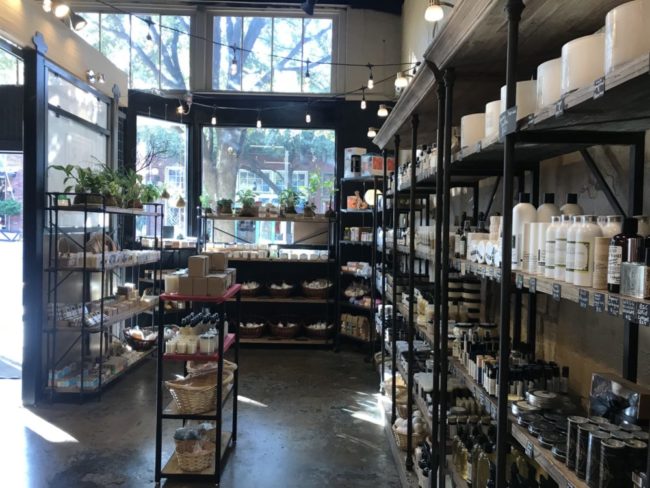
White candles and soaps line the wooden shelves and the fresh, soapy scent of the products flows through the air. Sunlight flows through the large window in the front of the store, filling it with warmth.
The Bishop Arts location of White Rock Soap Gallery is nestled in the front of a space with three other small shops. The space itself is warm and inviting. As the holidays grow nearer, the store and the surrounding community prepare for the flood of holiday shoppers.
White Rock Soap Gallery was started in 2013 by Keith Bailey and Mark Fuentes. In an interview with VoyageDallas in 2013 Bailey said, “We used the term gallery in our name because we envisioned a place where we could introduce our customers to other local Texas makers in addition to our own products. We currently also sell products from 30 local artisans from cities all over Texas.”
The different communities the stores reside in “inspire unique scents for each store”, White Rock Soap Gallery employee, Jason Martin, says. The stores generally carry the same products, but each store may have unique items tailored to its community. Martin has been working at the store for two years and enjoys the calm environment and loose structure, compared to traditional corporate jobs. The store also fits into the niche market of the Bishop Arts community by selling products that are handmade by local artisans.
The soap gallery fits in well with the surrounding Bishop Arts community. The stores in the community get along well and are often careful not to carry products other stores are carrying to reduce competition between businesses.
By Colleen Elliott

One of the newest faces on the Bishop Arts District scene is Paradiso, a southern European-inspired restaurant opened in late September 2019 by real estate developers Exxir Capital. Gerald Pearson, assistant general manager, explains how it has been settling in to this famously quirky neighborhood.
Before working at Paradiso, Pearson worked at Sachet, a Mediterranean restaurant on Oak Lawn with a similarly Instagram-able feel.
“My roommate works for Exxir Capital, so I just met some really great people while I was looking to grow within my career, and this was opening up,” says Pearson.
The place is undeniably trendy, with a hot pink neon sign bearing the restaurant’s name framing the main entrance. The walls and ceiling are covered in windows, and vibrant green vines hang delicately above visitors’ heads. Cozy furniture in pink velvet and rich brown leather complete the look. The whole place is begging to be posted on your Instagram story.
“It’s the only place in the Bishop Arts District that can hold this amount of people,” says Pearson. “It brings people to Bishop Arts, so I think people have really enjoyed it – they can come here and connect.”
Critics in the neighborhood have argued that Paradiso lacks the authenticity of other nearby businesses. They fear it is just another sign that Bishop Arts District’s reputation as Dallas’ best-kept secret is quickly dissipating. But the reception by neighbors, Pearson says, has been positive.
“Just speaking for Bishop Arts, it’s very community driven, so all the shop owners know each other. We all do things – if we’re planning an event, we get everyone else involved, so I don’t think that anyone feels threatened by any means,” says Pearson.
It’s impossible to deny, however, that changes to the Bishop Arts District are coming.
“Exxir Capital is doing so much within Bishop Arts – right now, they’re breaking ground on new apartment complexes, hotels. So, this is their first venture into restaurant hospitality. There’s a lot more to come,” says Pearson.
By Maggie Kelleher

In an area that is rapidly changing, Ken Valencia merges his high-fashion background with the Bishop Arts District’s local touch to create a trio of businesses that feel right at home.
In 2012, Valencia left his job as merchandise manager for Donna Karan to open Home on Bishop. Located at 502 North Bishop Avenue, the lifestyle boutique offers almost exclusively hand-crafted home décor, clothing, jewelry, furniture, and more at affordable prices.
“The Bishop Arts District was just the only place where I considered having this store,” said Valencia. “It has an authentic, cool vibe that I really liked, and it was an opportunity for me to bring cool, hand-made, hand-crafted, affordably priced merchandise to Dallas.”
In the front window, a collection of eclectic vases in seemingly endless shapes, sizes and patterns are on display. Against a wall, a rack of newly-arrived fur shawls hang neatly, signaling the store’s shift into winter. Holiday-ready miniature bags adorned in jewels sit decoratively around the store.
After the success of Home on Bishop, Valencia purchased Bishop Street Market – a gift boutique originally opened in 1996 – which is located mere steps from his first business in the neighborhood. Then, about a year and a half ago, he opened Ellison | Valencia Gallery, which offers local art at affordable prices.
As a business owner and resident of the neighborhood, Valencia recognizes the changes that the area has undergone.
“The changes have been pretty quick. When we first moved into the store years ago, it was just a small neighborhood, and it started to grow,” said Valencia. “Now I get to employ more locals, and that goes back into the local economy. So, it’s been good not only for me, but good for the local economy, as well.”
As far as shopping goes, Valencia offers one piece of advice: stay off the internet.
“We’re so used to online shopping and Amazon gobbling up the world,” said Valencia. “With brick and mortar, you can actually go into a store, talk to a real person, try on the clothing, understand what’s behind it, how it was made, the process behind it, and having that interaction is so important – not just to me and my neighborhood, but I think globally.”
By Maggie Kelleher
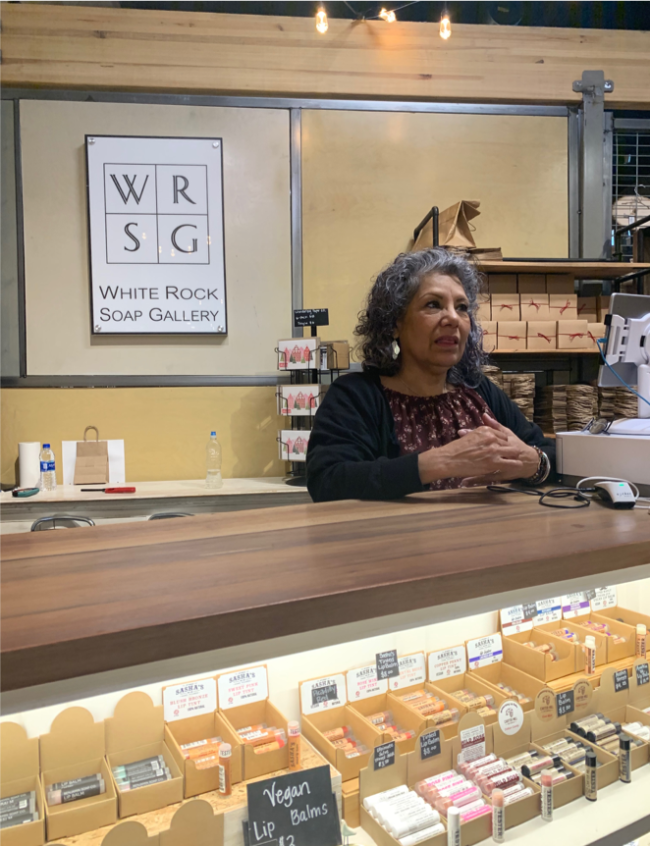
A lot of things can happen in 47 years, including a complete change in a Dallas neighborhood. Caty Selinas has witnessed the change Bishop Arts has gone through throughout the years.
“This area when I first came to Dallas in 1972, was really run down. A lot of graffiti, a lot of crime and destroyed from inside. People used to break in and steal,” she said.
After having seen the neighborhood grow so much in the past years, Selinas has recently started working and moved to the neighborhood. Before, she used to visit the neighborhood and come here for the Hispanic Food.
“I’ve been here for a year and a half and I love it, how this neighborhood is today is the same place I always dreamed of living, ” she said.
“It’s been a great change. Everyone here is always happy and I love seeing tourists from all over. I’ve met people from London, Argentina, Colombia and so many more places.”
Although Selinas is very happy in her new home, the high prices that keep increasing is something she wishes would change. She believes White Rock Gallery, where she works is one of the few stores in the neighborhood that is not incredibly high priced.
“White Rock Gallery opened in March 2018. It was a rocky start in the beginning but the prices here are very reasonably compared to other vendors,” she said.
Selinas hopes that the prices don’t keep increasing as she would ideally like to stay in the neighborhood.
“I love it here and don’t ever want to leave but if these prices keep raising I’m going to have to,” she said.
By Isabella Mejía

Seeing Bishop Arts District grow from the outside is one thing, but seeing it grow as you one for one of the biggest neighborhood developers is another thing. Valeria Martinez works as the secretary for Merchants Association and Jim Lake.
“I was looking for a job when I graduated college and my mom knew a friend of his. I started as an intern and I had no idea he owned like 95% of Bishop Arts so then I stated working over here too because he wanted someone to be part of the Bishop Arts Merchant Association,” she said.
“So, basically whatever happens here, if people have concerns or things like that I’m basically the voice of it for him.”
Jim Lake is one of the biggest developers in Bishop Arts. The company owns more than 850,000 square feet of property.
Growing up in Oak Cliff, Martinez is proud of her neighborhood expanding and becoming what it is today.
“I grew up in Oak Cliff, before it was Bishop Arts really. I grew up like a few streets down so mostly like Jefferson I’d go to and stuff and it wasn’t really nice yet like it wasn’t a bad neighborhood but it obviously wasn’t like it is now, “ she said.
Today, as she works for Jim Lake she has learned all about development and how new businesses settle into the neighborhood.
“Jim Lake doesn’t build up he works with what’s already here. So he does a lot of like re-development so these are, like, his building but then the newer ones are other developers,” she said.
“He wants to keep it unique and wants to give back to Dallas so he is very specific about who he puts here,” “Right now it’s going South and it’s growing towards Jefferson because these people keep building to that direction.”
Although Martinez is thrilled her neighborhood is growing, she has seen first-hand how businesses, mostly Hispanic that have been there for more than 20 years, are being “pushed out.”
“My family is being pushed out because rent is going up and stuff like that. Which is true because there used to be an ice cream place right here that got pushed out because their rent went up too high and that was a big thing because everyone loved it,” she said.
Martinez realizes the neighborhood is going through a gentrification process and that there’s always a positive and a negative side.
“There’s a good and a bad to gentrification it’s not always bad. There’s people here that own properties and they get paid a ton of money because they end up selling it but then you’re also being pushed out,” she said.
Martinez wishes for the neighborhood to continue growing and wants to continue to be part of that process as she continues to work for Lake.
“The way I also see it it’s that this has always been my neighborhood and I see us doing so much better so obviously for me I prefer that,” she said.
By Isabella Mejía
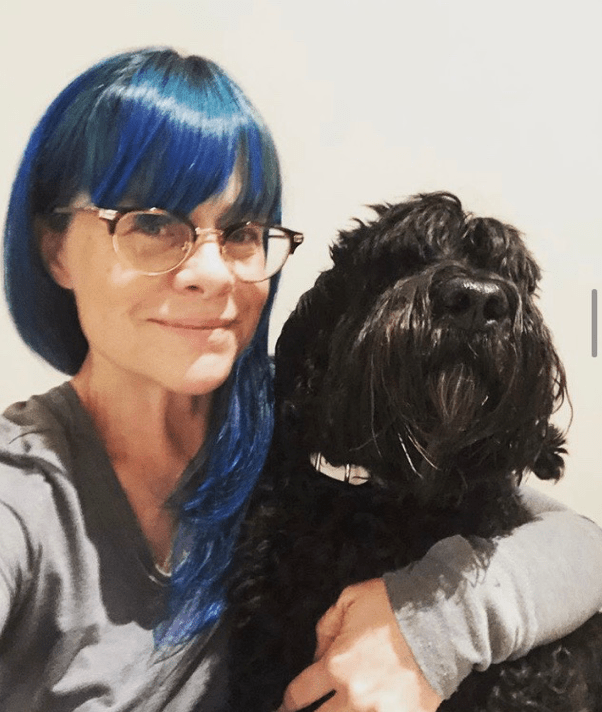
When Meri Dahlke and her co-founders opened Ten Bells Tavern in 2012, the surrounding neighborhood was a far cry from what it is today. They’ve rode the wave of change so far, but as of now, there may be an end in sight for this locally-loved bar.
“Everything is changing,” Dahlke said. “It’s definitely a lot more apartment folks. Down here – on our side of Bishop Arts – nobody used to cross that, but now they do because they have developments down the street.”
It didn’t take long for one of these developers to begin encroaching on Ten Bells Tavern’s spot in the neighborhood.
“We are one of the properties that got bought out by a developer,” Dahlke said. “Luckily, they weren’t able to take our property over, so we get to remain there through our lease, but we don’t know about after. So hopefully we can help keep things the same until then.”
In an area that is quickly becoming known for its density of Instagram-able businesses, Ten Bells is dark, small, and unassuming, which may be why locals love it so much.
“It’s one of the last places around that still draws mostly locals – not just tourists,” says Lydia Arnold, a lifelong resident of the area.
Despite the uncertain future on the horizon, Dahlke is optimistic.
“I see a lot more young people, and it’s great – it’s a different dynamic in the neighborhood, and we encourage that,” Dahlke said.
Still, Dahlke maintains that there is a fine line between progress and erasure of the neighborhood’s culture.
“I think the changes have been both positive and negative,” Dahlke said. “It’s very different than from when we first got the place. You have the old school people who are like, ‘We don’t like it, we don’t want that,’ and then you have people like us who want the in-between.”
By Maggie Kelleher
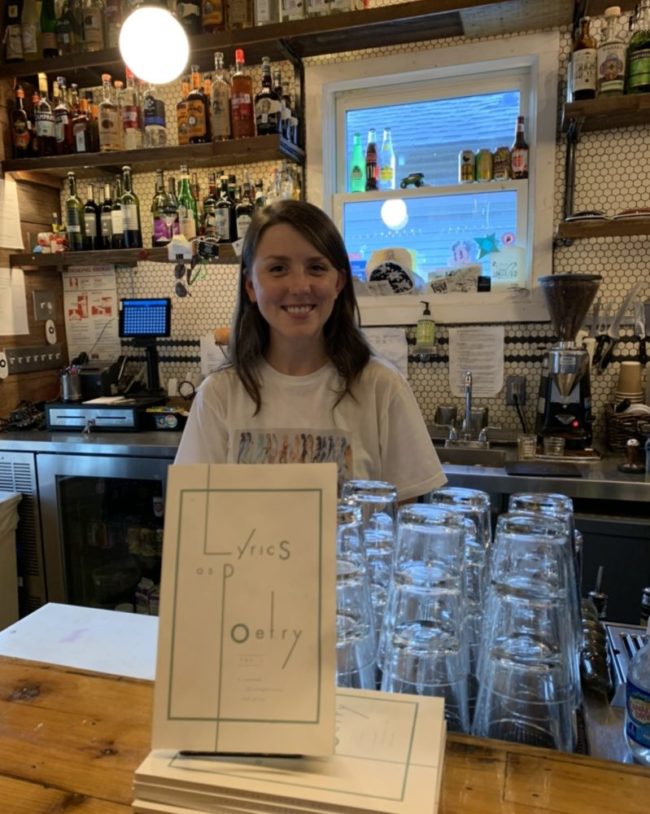
In Wild Detectives bookstore, a child runs around examining the books while her mom orders her a hot chocolate. At the bar, a couple asks for a refill on both their coffees – one latte and one drip coffee. Behind the counter, one of the newer baristas works quickly to fulfill all the incoming orders.
Danielle Sherrill has been working at Wild Detectives for two months. She started working at the combination coffee shop and bookstore after graduating from the University of British Colombia. While Sherrill has lived in Texas her whole life, besides her college years, she sees Bishop Arts as an area with new life and a great culture.
It was actually Wild Detective’s commitment to connecting people offline and providing an “accepting, conversational, social place in the neighbor,” is what drew Sherril to working as a barista for them.
“People will sit at the bar and meet people they’ve never met before. There’s a lot of people that are working on projects or reading and they will start a conversation about their work or the book they’re reading so it’s very lively,” said Sherrill.
For now, Sherrill commutes from Irving where she is living with her mother. Her topic prority now that she has settled into her job is finding her own apartment, but the search is proving a little difficult.
“ I don’t really want to move in with a complete stranger but I have very few connections within Bishop Arts so I might just have to trust a stranger,” Sherrill joked. “But I’m not at that point yet.”
Her hope is to live within the Bishop Arts neighborhood but with the rising rent prices Sherrill also said she was looking into surrounding neighborhoods such as Lower Greenville but for now Sherrill’s enjoying the time she gets to spend with her mom while she stays at home.
By Lauren Lehner
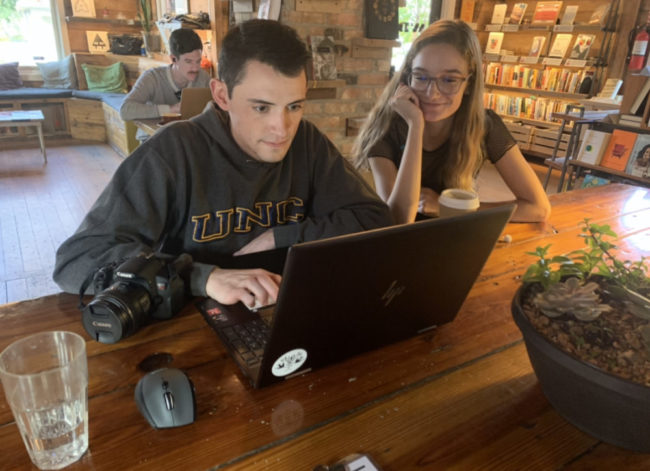
For students, fall is the season of finals and with finals comes the need for lots of preparation. However, trying to find places to study that aren’t overly crowded can be challenging. Two students at the University of Texas at Dallas are currently trying to find the solution to that very problem.
Tommy Ambuul is a senior studying biochemistry and has been coming to Wild Detectives since 2017 and says it’s his favorite place to study.
“I like that it’s all wood and I love the art around the area like the urban feel to it,” said Ambuul. “I keep coming back for the coffee shop.”
Ambuul also brought his friend with him to get her off campus and try Wild Detectives for the first time.
“It’s really quiet in here and a lot of times when you go to coffee shops like it’s not super quiet so it’s harder to get work done but here it’s really easy to stay on task and get your work done,” said Julia Miller, a junior studying theology with an emphasis in education.
Both upperclassmen are actually from the Irving area but find it hard to work on campus and the choice of places to go off campus is limited so they spend more time studying in Dallas.
“I’m pretty sure there are no coffee shops in Irving that I’ve found,” said Ambuul.
“Yeah the closest one is about a 5-minute drive but there is definitely nothing you can walk to,” Miller agreed.
Both students prefer venturing out of their neighborhood to study and get work done. Miller and Ambuul also agreed that they travel to Dallas instead of staying in Irving because the cleanliness of coffee shops in both Bishop Arts and downtown Dallas makes it worth it to drive.
By Lauren Lehner
This article is part of a series in a special project on gentrification in Dallas from an SMU Division of Journalism course titled Advanced News Reporting. The class is taught by Karen Thomas.




